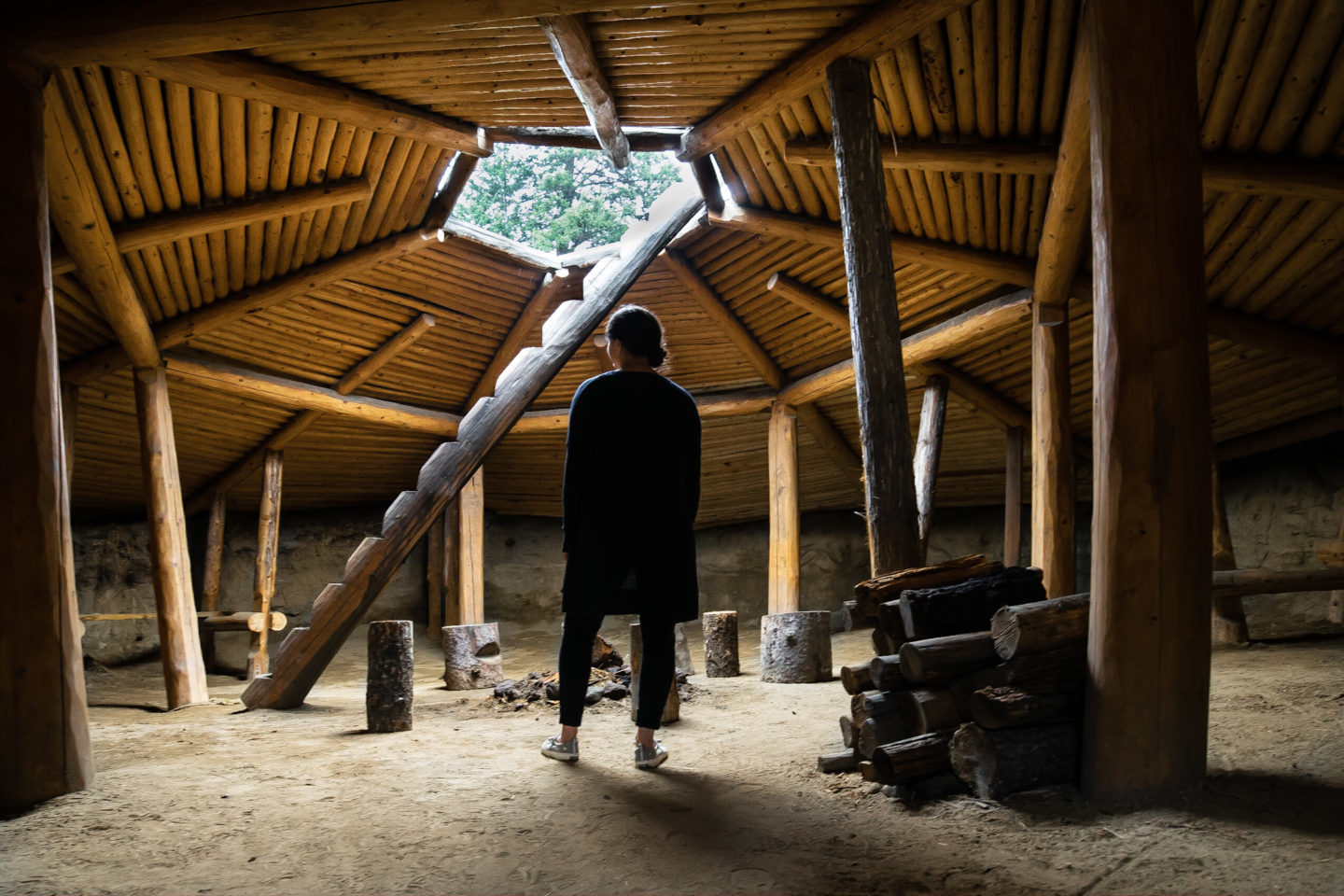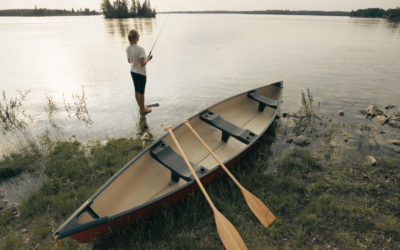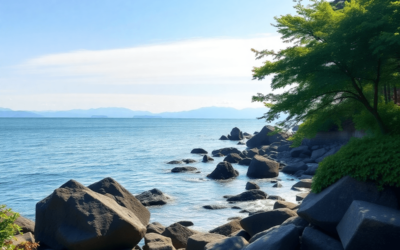The BC Gold Rush Trail takes visitors on a fascinating journey through British Columbia’s rich history, as they follow the footsteps of early gold seekers. This remarkable trail stretches approximately 1,900 km and showcases the breathtaking landscape that captivated the hearts of countless pioneers. It is more than just a tale of adventure and wealth; it is a story that has shaped the province for generations.
Along this epic route, travelers will discover remnants of the past, whether it be historical artifacts or glimpses into the resilience of the early pioneers who embarked on this perilous quest. The Gold Rush Trail winds through diverse terrains, from gentle rides to rugged mountain treks, offering an unforgettable experience for history enthusiasts and outdoor adventurers alike.
From Hope to Lytton and beyond, the Gold Rush Trail encapsulates the spirit of exploration that has long defined British Columbia. Visiting the Yale Historic Site, experiencing the recreated 1860s boomtown of Barkerville, and witnessing the majestic South Chilcotin mountain range are just some of the awe-inspiring encounters that await along this storied path. This scenic and historically significant trail truly offers a unique glimpse into the heart of British Columbia’s past, which we want to cover in this blog post.

BC Gold Rush Trail Overview
Historic Significance
The BC Gold Rush Trail is a journey through British Columbia’s rich history, tracing the routes and sites where gold seekers ventured during various gold rush events in the region. Starting with the Fraser River Gold Rush in 1858, which attracted thousands of prospectors from places like San Francisco and around the world, the trail also encompasses the Cariboo Gold Rush of the 1860s. The gold rushes led to the establishment of many vibrant towns and communities, with Barkerville becoming one of the most famous and prosperous.
Geographic Location
The Gold Rush Trail stretches for approximately 1,900 km (1,188 mi), starting at the mouth of the Fraser River in New Westminster and extending northward through the Fraser Canyon, past Hope and Yale, and into the heart of the Cariboo Mountains. The trail encompasses a diverse range of landscapes, from the fertile plains of the Cariboo region to the rugged wilderness areas surrounding Prince George and Quesnel. Much of British Columbia’s highway network follows trails originally used by the early gold seekers, connecting Vancouver in the south to Barkerville in the north.

Attractions Along the Trail
A drive along the Gold Rush Trail takes travellers on a journey through time, offering opportunities to explore historical sites, witness stunning natural beauty, and immerse themselves in the stories and experiences of gold rush adventurers. Some notable attractions along the route include:
- New Westminster: The trail begins in this historic city, which was once the capital of the Colony of British Columbia and a key location during the Fraser River Gold Rush.
- Yale: A historic town in the Fraser Canyon, Yale played a significant role in the gold rush as a transportation hub, with steamships and the transcontinental railway passing through.
- Cariboo Gold Rush Trail: The section of the trail leading into the Cariboo Mountains is particularly important, as it is the area where the Cariboo Gold Rush occurred in the 1860s. Ghost towns, museums, and more are waiting for visitors to relive the thrills and challenges gold rush prospectors faced in their quest for fortune.
- Quesnel: This community is an essential stop, as it’s strategically located at the junction of the Quesnel and Fraser Rivers and is considered the gateway to exploring the Cariboo Goldfields.
- Barkerville Historic Town & Park: The journey concludes at this well-preserved historical site, which was once the largest town in western British Columbia during the gold rush era. Barkerville offers visitors an immersive experience, with costumed interpreters, preserved buildings, and interactive activities that bring the gold rush to life.
With its historic significance, scenic landscapes, and tales of adventure, the BC Gold Rush Trail provides an unforgettable journey through British Columbia’s golden past.
History and Stories
The Cariboo Gold Rush
The BC Gold Rush Trail is intricately tied to the Cariboo Gold Rush, which started in 1858. This gold rush was sparked by the discovery of gold in the Fraser River region, which attracted thousands of prospectors from places like California and around the world. The towns of Barkerville, Quesnel, and Yale played essential roles during this time, serving as gateways to the goldfields and centers for the miners’ needs. Not only did the Cariboo Gold Rush lead to the establishment of Barkerville Historic Town, but it also spurred the development of the Cariboo Waggon Road, which connected Victoria to the goldfields and eventually extended to Valemount, Kamloops, and the Lower Mainland.
Notable People and Pioneers
Against the backdrop of the Cariboo Gold Rush, many individuals made a name for themselves, like Billy Barker, who struck it rich at Williams Creek and lent his name to the town of Barkerville. Others played essential roles in the development of infrastructure that would support the booming gold mining population. Among them were the Royal Engineers, who built the Cariboo Waggon Road that allowed miners and supplies to travel between Victoria and the goldfields.
Indigenous Peoples and the Fur Trade
Before the Cariboo Gold Rush, the region had been home to Indigenous peoples like the Nlaka’pamux, who had lived along the Fraser River for thousands of years. Their traditional ways of life were significantly impacted by the influx of gold miners and other settlers in the area. The Indigenous people’s knowledge and skills proved invaluable for the fur trade, which played a central role in the region’s socioeconomic development, particularly in towns like Yale and Lillooet. The Yale Historic Site provides an example of where Indigenous culture and the fur trade intersected, often leading to overlapping and complex relationships among the Indigenous peoples and European settlers.

Along the Gold Rush Trail, one can delve into the rich history that shaped British Columbia, encounter the tales of miners, dreamers, and pioneers, and gain an appreciation for the diverse Indigenous cultures that predated the gold rushes. This trail provides a unique lens to view and explore fascinating stories from centuries past.
Activities and Outdoor Adventures
The BC Gold Rush Trail offers a wide variety of activities and outdoor adventures for all ages and interests. Embracing the rich history of the area, visitors can embark on a journey through time while also enjoying the natural beauty and exhilarating activities this region has to offer.
Hiking and Biking Trails
From casual strolls to challenging hikes, the Gold Rush Trail offers numerous trails to explore. Lillooet serves as a great hiking home base, with scenic trails and historic significance. Mountain bikers will be thrilled with the variety of terrain available in the region, from Cariboo Mountain trails to the rolling hills of 100 Mile Marsh, near 100 Mile House. For history enthusiasts, a visit to Historic Hat Creek is a must, where you can explore the intrinsic connection between the trail’s history and nature.
Wildlife Viewing
Nature lovers will find a wealth of wildlife viewing opportunities along the Gold Rush Trail, as the area is home to diverse ecosystems and abundant animal populations. Take a trip to Chasm Provincial Park and marvel at the rugged landscape, or embark on a fishing adventure in Cache Creek. Birdwatchers will delight in the multitude of bird species found in 100 Mile Marsh, close to 100 Mile House, while those seeking larger wildlife can venture into Cariboo’s forests to spot bears, moose, and deer.
Whitewater Rafting
For thrill-seeking adventurers, the Gold Rush Trail offers an adrenaline-pumping experience with its steep canyons and raging rivers. Whitewater rafting enthusiasts can find several exciting opportunities to navigate the fast-flowing waters and witness the stunning scenery from a different perspective. Enjoy a heart-pounding adventure, surrounded by the incredible beauty of British Columbia’s wilderness.
In conclusion, the BC Gold Rush Trail provides a plethora of outdoor activities and adventures for visitors of all interests and skill levels. Whether you’re captivated by history or drawn to the stunning natural beauty, the Gold Rush Trail has something for everyone.
Historic Destinations and Accommodations
Barkerville Historic Town & Park
Barkerville Historic Town & Park is a major attraction located in central British Columbia along the Gold Rush Trail. Once a thriving gold mining town, Barkerville now operates as a living museum, showcasing the history and heritage of the Cariboo gold rush era. Visitors can explore the well-preserved buildings, enjoy live performances, and participate in interactive exhibits that transport them back to the 1800s.

Historic Hat Creek
Historic Hat Creek is situated along the original Cariboo Waggon Road, which played a vital role in the transportation of goods and people during the gold rush period. The site features numerous original structures from 1901, offering visitors a glimpse into the past. Interactive experiences, such as gold panning and stagecoach rides, provide a hands-on understanding of life during the gold rush era.

Hotels and Roadhouses
Along the Gold Rush Trail, several historic hotels and roadhouses have been preserved to provide accommodations for modern travelers. One such example is the Cottonwood House, a former roadhouse built in the 1860s. It once served as a vital stopover point for gold seekers traveling between Quesnel and Barkerville. The establishment provided travelers with shelter, food, and supplies as they ventured along the trail. Today, the Cottonwood House offers visitors a unique opportunity to experience the roadhouse’s rich history while enjoying modern comforts.
Guest Ranches
Guest ranches along the Gold Rush Trail offer visitors the chance to experience the area’s stunning natural beauty while learning about the region’s history. For example, the Historic Hat Creek Ranch is a working ranch that offers accommodations, guided tours, and hands-on activities, such as horseback riding and gold panning. Located near Clinton, the ranch provides a glimpse into the daily life of early settlers and gold miners in the Cariboo region.
These historic destinations and accommodations along the Gold Rush Trail in British Columbia provide a unique opportunity for visitors to step back in time and experience the fascinating and transformative impact of the gold rush era on this region.
Routes and Highways
The BC Gold Rush Trail offers several routes for visitors looking to explore the region’s history and scenic beauty. This section focuses on the Gold Rush Trail by Highway 97 and some alternative routes to consider.
Gold Rush Trail by Highway 97
Highway 97 is a principal route for those embarking on a journey along the Gold Rush Trail. Starting at Vancouver, travelers head east towards New Westminster, where the Gold Rush Trail begins. From there, the route follows the Cariboo Wagon Road northward, passing through various locations rich in history and natural beauty.
Key stops along Highway 97 include Lillooet, Williams Lake, and Cache Creek. In Lillooet, travelers can learn about the region’s history at the Yale Museum and explore the fascinating geological formations around the Thompson River. Williams Lake offers stunning views and ample opportunities for outdoor activities like hiking and fishing. Cache Creek, once a major stopping point on the Cariboo Wagon Road, now serves as a hub for exploring nearby historical attractions, such as the Fort Langley National Historic Site.

Alternative Routes
For those seeking a more adventurous route, there are several alternative options to explore the Gold Rush Trail. One such option is taking Highway 1 through the Fraser River Canyon, passing by historic gold rush towns like Yale, Lytton, and Boston Bar. This route offers stunning views of the canyon and narrows down to the iconic Hell’s Gate before reaching the Cariboo region.
Highway 99, also known as the Sea-to-Sky Highway, connects Vancouver to Lillooet and offers travelers an opportunity to experience the breathtaking landscapes of the Coast Mountains. Along this route, adventurers can explore picturesque destinations like Whistler and Pemberton before continuing on to the Gold Rush Trail.
Lastly, for those traveling from Victoria or the east coast of Vancouver Island, Highway 16, also known as the Yellowhead Highway, provides a link to Highway 97 via Prince George. This route passes through the Cariboo region and offers travelers a chance to visit various gold rush sites, such as Barkerville, Wells, and Quesnel.

In conclusion, the BC Gold Rush Trail presents multiple route options for those in pursuit of the region’s rich history and natural beauty. From the main Highway 97 to alternative routes such as Highways 1, 99, and 16, there is no shortage of ways to explore the scenic and historic treasures found along this iconic trail.
Conclusion
The BC Gold Rush Trail has played a significant role in the history of British Columbia. Stretching over 750 km from New Westminster to Barkerville and north to Stone Creek, it encompasses the traditional Indigenous peoples’ trading routes utilized during the fur trade and expanded during the gold rushes of 1858-1862 (source). Traveling along the trail today, visitors can appreciate the rich history and stunning natural landscapes that have shaped the region.
Examining the trail’s past, it is evident that gold rushes had a profound impact on the province of British Columbia in the mid-19th century (source). The discovery of gold in the Fraser River in 1857 sparked a significant influx of prospectors and settlers who sought their fortunes in the region. This eventful period left behind a fascinating legacy that continues to attract visitors and history enthusiasts alike.
In addition to its historical significance, the Gold Rush Trail offers a diverse range of outdoor experiences and breathtaking natural landscapes (source). As it stretches from the afertile Fraser River plain through steep mountain passes and lush forests, the trail provides ample opportunities for hiking, camping, and wildlife viewing.
By embracing the myriad experiences available along the BC Gold Rush Trail, travelers can enjoy a unique journey that combines history, culture, and natural beauty. The trail’s importance as a symbol of British Columbia’s heritage serves as a testament to the resilience and adaptability of the people who braved its challenging terrain in search of fortune and a better life. Today, visitors can honor the trail’s legacy by exploring its many attractions and connecting with the stories and landscapes that have shaped this remarkable region.




